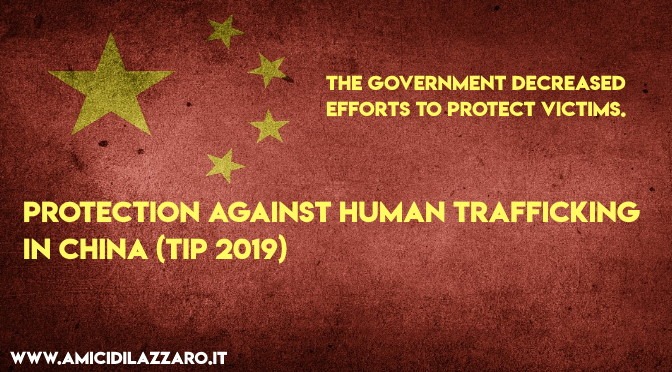
The government decreased efforts to protect victims. For the second consecutive year, the government did not report how many victims it identified, although media reports indicated authorities continued to remove some victims from their exploitative situations.
MPS maintained written instructions promulgated in 2016 for law enforcement officers throughout the country aiming to clarify procedures for identifying trafficking victims among individuals in prostitution and forced or fraudulent marriage.
MPS officials reportedly maintained a procedure to screen for trafficking indicators among individuals arrested for alleged prostitution. A 2016 policy limiting the detention of such individuals to 72 hours remained in place. Despite the existence of these procedures, and contrary to the aforementioned policy, law enforcement officials continued to arrest and detain foreign women on suspicion of prostitution crimes without screening them for indicators of sex trafficking—sometimes for as long as four months—before deporting them for immigration violations.
In some cases, rural border officials received reports involving the sex trafficking and forced labor of Burmese and Mongolian women and girls via forced and fraudulent marriage to Chinese men, then provided them with temporary shelter and helped to fund and escort their repatriation. However, observers noted this assistance was ad hoc and less prevalent among front-line officers working farther inland, where some foreign victims escaped, reported these abusive circumstances to the authorities, and were summarily arrested and forcibly returned to their Chinese “husbands”—sometimes in exchange for bribes from the men’s families. Because authorities did not universally implement the national referral mechanism across law enforcement efforts, it was likely police arrested and detained unidentified Chinese trafficking victims for unlawful acts their traffickers compelled them to commit.
In prior years, the government reported maintaining at least 10 shelters specifically dedicated to care for Chinese trafficking victims, as well as eight shelters for foreign trafficking victims and more than 2,300 multi-purpose shelters nationwide that could accommodate trafficking victims; it did not provide information on these shelters in 2018.
The Ministry of Civil Affairs, a nationwide women’s organization, and grassroots NGOs could provide victims with shelter, medical care, counseling, social services, and—in some cases—rehabilitation services. Foreign embassies in China reportedly provided shelter or other protective services to victims. Authorities did not condition access to victim care on cooperation with law enforcement, but they did require victims to provide information to police.
Authorities reported repatriating a number of victims in 2018 but did not provide further information, including whether they were Chinese or foreign. International civil society groups reported China’s diplomatic missions were often unresponsive to complaints filed by Chinese victims of forced labor overseas, particularly in Japan. The government did not undertake efforts to identify trafficking victims within its highly vulnerable North Korean migrant population, nor did it provide suspected North Korean trafficking victims with legal alternatives to repatriation. Authorities continued to detain North Korean asylum-seekers and forcibly returned some to North Korea, where they faced severe punishment or death, including in North Korean forced labor camps; the government did not report screening these individuals for indicators of trafficking. In compliance with an UN Security Council Resolution, the government reportedly repatriated some North Korean labor migrants; Chinese authorities did not screen them for trafficking indicators or offer options to legally remain in the country.
Adapted from TIP 2019 by the U.S. Department of State

